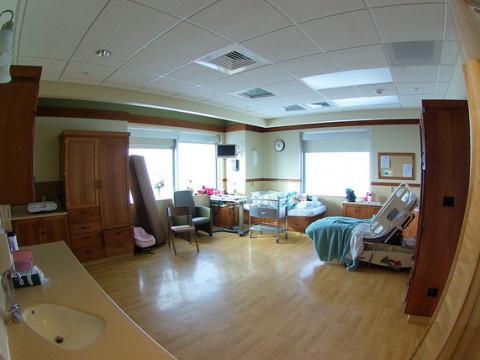Are You Creating a Birth Plan
Creating a birth plan can help you prepare for the day your little one arrives. After sitting through child birth classes and reading all the pregnancy books you can, you may have an idea of how you want your labor and delivery to go. During labor, you will be completely focused on birthing your baby, which may make it hard for both you and your partner to express your wishes. Writing down all of your requests can help both you and your spouse communicate your feelings to the medical staff who will be present at the birth. A basic birth plan is an outline of what things you do and do not want to happen during your labor and after delivery. Some women include information on laboring in different positions, using pain medications or who will be in the room. Each birth plan is unique; however, there are some unusual requests that may be worth including in your plan.

How and Where You Labor
In most hospitals, women labor on their back in a bed. While this type of labor works for some women, it is ineffective for others. Consider adding information to your birth plan that gives you more freedom on how and where you labor. Some women request that they be able to labor and/or deliver their baby in a pool or tub. Some women find that being in the water helps ease pain. Others want to labor in an upright position and deliver their baby with the use of a squatting bar. This type of device is usually a bar that is attached to the bed and allows the woman to squat during labor. When a woman lies flat on her back, the uterus puts pressure on major blood vessels, which can decrease fetal heart tones. Birthing in an upright position can remove pressure on the blood vessels and make it easier for a woman to push during contractions.
After Delivery Requests
Some women have special requests for after the delivery of their baby. While the nurses usually take the baby and check him or her over in a separate corner of the room, you can ask that the baby be placed directly on your stomach and kept with you during the initial time after the birth. Some women include requests that directly affect the baby, such as no medications or vaccines be given to the baby or that the baby not be bathed. Saving the placenta is another uncommon request during the time after delivery. While that may seem strange, there are benefits from keeping the placenta. Directly after birth the mother will experience rapid changes in her hormones. The placenta contains high amounts of progesterone, which can help a mother stabilize hormone shifts in her body. If eaten, the placenta may help prevent postpartum depression and postpartum bleeding. The placenta can be dehydrated by the woman or by someone specialized in placentophagy. The mother can choose to eat very small slices of it or can have it grinded into a powder and placed inside capsules that she can take orally.
Your birth may not always go as planned if there are emergencies that require medical intervention, but being prepared with a birth plan can help you make your wishes known and make you feel more prepared for the big day.
Thank-you for reading this article. Please feel free to leave your thoughts in the comment section below.